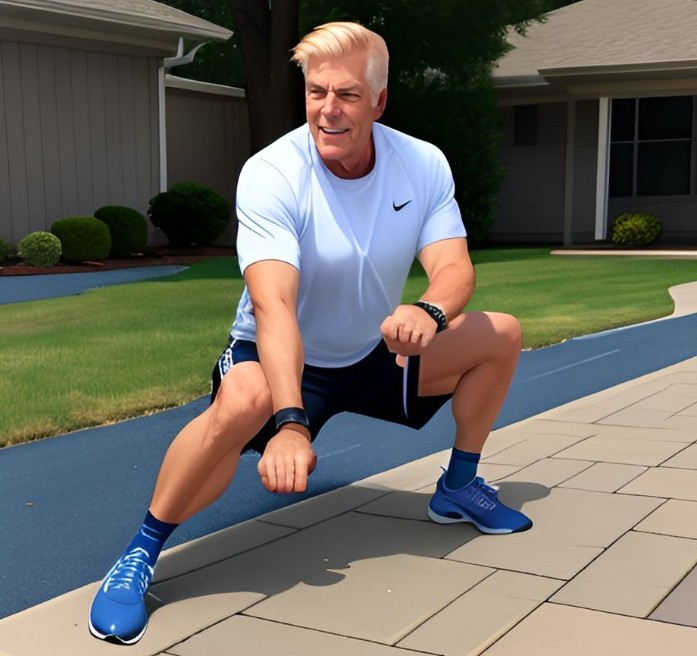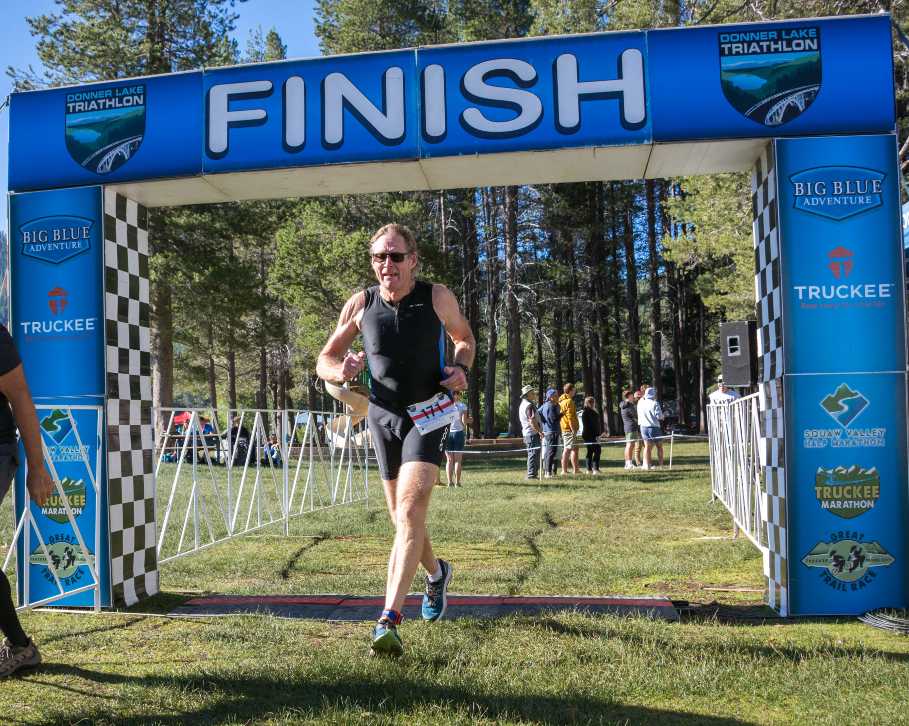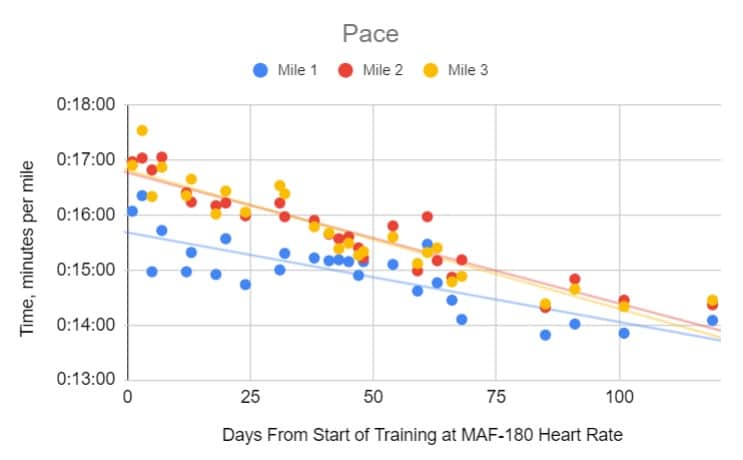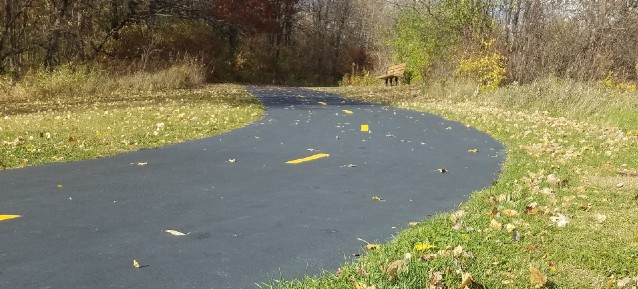Best Pre-Run Warmup Approach For Senior Triathletes
A pre-run warmup becomes more important with each birthday. A combination of dynamic stretching and foam rolling provides what you need for safer and better quality run training.
Background
During a recent conversation with Dr. George Eversaul, developer of AquaStretch™ therapy, I mentioned my tight hips. I told him that I was looking for a way to loosen them. In response, he told me that the first thing I should try is stretching and foam rolling before running.
It surprised me to hear him say this. I needed no convincing to stretch after running. I am also a proponent of foam rolling, having solved an IT band problem by foam rolling many years ago.
However, I had convinced myself that stretching before running needed to be gentle, especially when the running muscles were “cold”. For most runs, I have migrated to skipping the warmup. Still, George’s comment caused me to do some research on the best way to warmup before a run, especially if it would improve my running performance, prevent injury, or both.
This post is what I learned through this research.
What Is The Purpose Of Pre-Run Warmup?
As with many so-called “givens”, conventional wisdom about pre-run warmup has changed dramatically over time. According to a post on the Marathon Handbook website titled How To Warm Up For Runners + A Complete Warm-Up Routine, pre-run advice has gone from static stretching to no stretching, then no warmup to, more recently, pre-run warmup as a must-do. Sports medicine research, such as that summarized in “Warm-up or stretch as preparation for sprint performance?” published in the Journal of Science and Medicine in Sport (JSMS), supports this advice.
Static stretching is no longer advised. Why? As the JSMS article referenced in the previous paragraph showed, there appears to be no benefit. In fact, holding stretches for 30 or more seconds before the muscles are warmed up may reduce performance by decreasing muscle strength and stability. Static stretches of “cold” muscles may also increase the risk of injury, including strains, during the run.
Before heading out on a training run, sports medicine professionals and physical therapists, recommend a 10-15 minute warmup routine. The challenge is to find a routine that does not compromise muscle strength or performance.
Warmups that are now recommended have the following main goals:
- activate, elongate, and reduce tightness of the muscles involved in running,
- prepare joints for moving,
- increase blood flow to increase core temperature and the temperature of the muscles required for running,
- stimulate the nervous system.
Because of the natural decline in flexibility and muscle elasticity that occurs with age, warming up before a run is even more important for older athletes.
Best Practices for Older Athletes
Searching Google for best pre-run warmup for “older athletes” will get you a generous number of sites to peruse. However, these generally miss an important practice for older athletes, especially those with limited mobility or flexibility in parts of the body engaged in running.
The following approach is especially important for older runners.
Get Your Heart Rate Up, Gradually
Whether through a brisk walk, doing a few jumping jacks, jogging in place, or pedaling a stationary bike, start with 5 to 10 minutes of light aerobic activity. This will raise your heart rate and core temperature gradually and, in doing so, increase blood flow to your muscles. This makes the muscles more pliable and ready for the next steps. I have also found that this is a good way to produce a little moisture on my skin so my heart rate monitor is more accurate and consistent.
Foam Roll Tight Areas
For many older athletes, foam rolling tight muscles can further improve pre-run mobility.
A major cause of tight muscles is myofascial adhesions, connections that form between the fascia, or outer wrapping, of adjacent muscles and other tissue. As explained to me by a physical therapist, tightness is like trying to slide two similar materials across each other while the two materials stick together at points along their surfaces.
By releasing myofascial adhesions, foam rolling after light aerobic activity offers the following benefits:
- Improves range of motion: According to the author of “A PT’s Guide to Foam Rolling for Runners“, studies have documented improved hip extension and knee flexion when foam rolling is combined with dynamic stretching.
- Increases blood flow: Along with the aerobic warmup, foam rolling further prepares muscles for physical activity. Increased blood flow aids in muscle relaxation, which can reduce the risk of injury.
- Reduces tightness: Tight muscles caused by myofascial adhesions may force our body to compensate during the run. These unnatural patterns can overuse other muscles. By providing myofascial release, foam rolling can help reduce the risk of injury caused by compensation.
- Activates the nervous system: The pressure from foam rolling activates neural receptors, which can relax muscles and optimize their response to dynamic movements
Foam rolling is simple. Place the foam roller against a hard surface, such as floor or wall, and place the tight area of your body against the foam roller. Lean into it and slowly roll across the tight area in both directions. If you are able, hold the position directly over the tight area for a few seconds, then repeat the process until the tightness has reduced.
For more information on foam rolling, checkout Become a More Flexible Senior Triathlete By Foam Rolling.
Dynamic Stretches Round Out a Warmup
The warmup concludes with one or more dynamic stretches. These are controlled, movement-based stretches that mimic the motions of running.
Examples include:
- Leg swings: Swing your legs front-to-back and side-to-side to open up the hip flexors and hamstrings.
- Forward lunges with a twist to engage the core.
- Side lunges to activate inner and outer thighs.
- Inchworms: A full-body stretch that also targets hamstrings and core.
- Butt kicks and high knees: These help activate your quads and glutes, promoting good form and balance during running.
- Leg kicks: Stand with feet apart with knees straight and stretch the right hand to the left foot, holding the position for two seconds, then repeat this with the opposite hand and foot.
Resources for Dynamic Stretching:
After completing dynamic stretches, consider easing into your run, running at an easy pace for the first five minutes. Gradually increase the intensity throughout this period. This primes your body for sustained effort while minimizing injury risk.
Conclusion
Older runners and triathletes will benefit from a pre-run warmup that includes light aerobic activity, foam rolling, and dynamic stretching. After increasing our heart rate and beginning to warm our running muscles, foam rolling relieves excess tension to improve flexibility. Dynamic stretches round out the warmup by activating the running muscles.
Skipping a pre-run warmup is a “no-no” if you want to avoid injury.
How Do You Warmup Before A Run?
Please let us know how you warmup for your run? What have you learned along the way?
Comments: Please note that I review all comments before they are posted. You will be notified by email when your comment is approved. Even if you do not submit a comment, you may subscribe to be notified when a comment is published.






